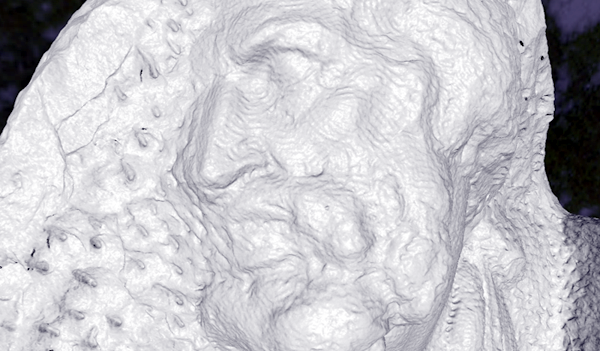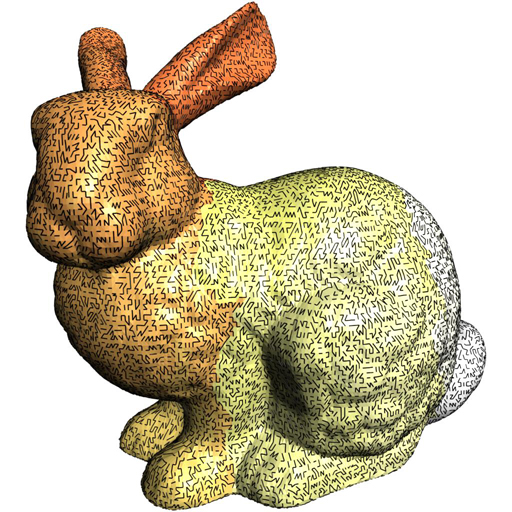Cache-Oblivious Mesh Layouts
New Software Announcement: OpenCCL
OpenCCL: Cache-Coherent Layouts of Graphs and Meshes
Video encoded with QuickTime Viewer (42MB)
(You can download QuickTime from QuickTime)
Scan of Michelangelo's St. Matthew:
We precompute a cache-oblivious layout of this 9.6GB scanned model with
372M triangles. Our novel metric results in a cache-oblivious layout and at
runtime reduces the vertex cache misses by more than a factor of four for
interactive view-dependent rendering. As a result, we improve frame rate by
almost five times. We achieve a throughput of
106M tri/sec (at 82 fps) on an NVIDIA GeForce 6800 GPU.
We present a novel method for computing cache-oblivious layouts of large meshes
that improve the performance of interactive visualization and geometric
processing algorithms. In our approach we make only general assumptions on the
locality of geometric algorithms and make no assumption with regard to the
particular data access pattern or cache parameters of the memory hierarchy
involved in the computation. Furthermore, our formulation extends directly to
computing layouts of multi-resolution and bounding volume hierarchies of large
meshes.
We develop a simple and practical cache-oblivious metric to estimate cache
misses. Computing a coherent mesh layout is reduced to a combinatorial
optimization problem. We designed and implemented an out-of-core multilevel
minimization algorithm and tested its performance on unstructured meshes
composed of tens or hundreds of millions of triangles. Our layouts can
significantly reduce the number of cache misses. We have observed 2-20 times
speedups in view-dependent rendering, collision detection and isocontour
extraction without any modification of the algorithms or runtime applications.
A Cache-Oblivious Layout of the Bunny Model:
All edges that join two consecutive vertices in the layout are drawn with black
line segments to visualize edges that have smallest edge span. We use a smooth
ramp from orange (first triangle) to white (last triangle) to visualize the
ordering of triangles.
Contents
Paper:
-
Mesh Layouts for Block-Based Caches
,
Sung-Eui Yoon and Peter Lindstrom,
To appear IEEE Transaction on Visualization and Computer Graphics (and IEEE Visualization) 2006
-
Cache-Oblivious Mesh Layouts
,
Sung-Eui Yoon, Peter Lindstrom, Valerio Pascucci, and Dinesh Manocha,
ACM SIGGRAPH and Transactions on Graphics, 2005
Talk slides:
Powerpoint slides, SIGGRAPH talk
Powerpoint slides, Visualization 06 talk
Related Links
Cache-Oblivious Layouts of Bounding Volume Hierarchies
Quick-VDR: Interactive View-dependent Rendering of Massive Models
UNC Walkthru Group
UNC Gamma Group
CB #3175, Department of Computer Science
University of North Carolina
Chapel Hill, NC 27599-3175
919.962.1749
geom@cs.unc.edu

